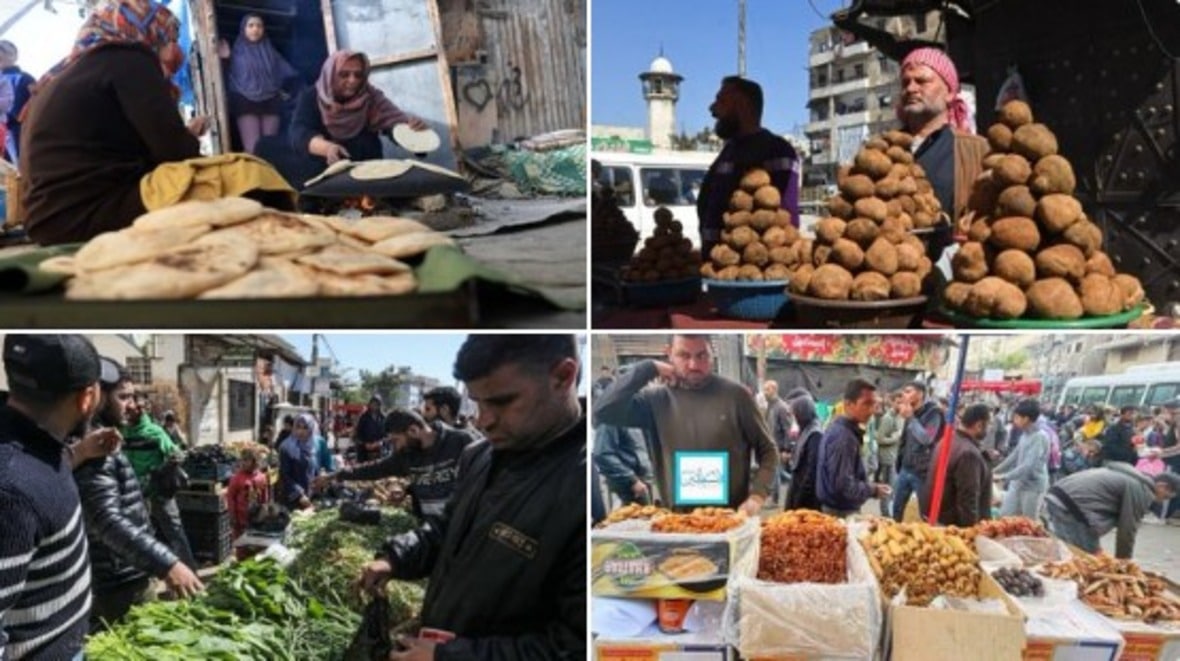A Closer Look At Gaza’s Food Crisis
Reports from various sources indicate that approximately 150,000 tonnes of food aid have entered Gaza since October 7th. This substantial quantity, averaging hundreds of pounds per Gazan, should alleviate hunger concerns within this region.
However, the reverse is the case; many Gazans still look malnourished, and the region has a food crisis. Hence, many wonder whether Hamas, the governing body of Gaza, is distributing the aid appropriately or has been diverting it for other purposes.
In contrast to claims of scarcity, recent images of bustling food markets in Gaza contradict the notion of widespread starvation. These visuals further complicate the narrative and prompt inquiries into the true state of affairs regarding food distribution and the well-being of Gazans.
As questions linger, it becomes imperative to investigate the fate of the substantial food aid and ascertain whether it reached those in need as intended.
As the humanitarian crisis in Gaza deepens, allegations of aid delays and obstruction have drawn rebuttals from Israeli officials, particularly from Shimon Freedman, a spokesman for COGAT, the Israeli military branch responsible for aid transfers.
A recent report by a global food security authority warns of an impending famine in parts of Gaza, fueled by widespread displacement and the destruction of vital infrastructure during the months-long conflict between Israel and Hamas.
Israel Defends Aid Delivery Procedures
COGAT’s Freedman vehemently denied accusations of deliberate delays or obstruction of aid shipments. He asserted that Israel has significantly increased aid access to Gaza and placed the responsibility for any delays on the international aid organizations.
According to the Israeli military, they can scan 44 trucks per hour at Nitzana and Kerem Shalom crossings, where aid vehicles undergo inspection. Following inspection at Nitzana, the trucks embark on a 40-kilometer journey back to Rafah, awaiting clearance to enter Gaza.
Freedman pointed out that the Israeli military approves nearly 99% of the Gaza-bound trucks it inspects, emphasizing that the inspection process itself is not the bottleneck in aid delivery. Freedman further explained that rigorous screening is necessary to prevent the diversion of aid resources into the hands of Hamas and other armed groups.
He points out that Israel meticulously scrutinizes shipments for dual-use items that could potentially be repurposed for military purposes, ensuring that humanitarian aid serves its intended recipients and not militant factions. Furthermore, Freedman dismisses claims of Israeli interference in aid distribution once it enters Gaza, emphasizing that such a responsibility lies with international aid agencies and the United Nations.
Security Risks And Logistic Hurdles
According to Freedman, diplomatic haggles among donor countries complicate aid delivery. He further said that disputes over prioritization and coordination further contribute to delays,
Despite the logistic hurdles, Israel has implemented measures to expedite aid delivery, including establishing the 96th gate, a new route directly to northern Gaza. This new route will bypass any potential interference by Hamas and make the flow of assistance to those in need seamless.
COGAT reports that the new route has already facilitated the entry of dozens of international aid trucks into the northern region. Responding to allegations of Hamas’s involvement in aid diversion, Freedman acknowledges the lack of specific evidence but maintains vigilance against the possibility of aid exploitation by the militant group.
However, the challenges extend beyond Israeli checkpoints and inspections. Aid convoys face security risks within Gaza itself, including attacks by armed individuals and incidents of looting. Despite international criticisms, Israeli officials remain steadfast in their commitment to facilitating aid delivery without sacrificing safety and security.
Innovative Aid Delivery Efforts
Nevertheless, countries like the United States have resorted to innovative methods in delivering aid to Gaza. Airdrops, coordinated by the United States, have been employed to supplement land-based methods. Additionally, international aid convoys from countries like Egypt and Jordan traverse multiple routes to Gaza, including the newly established northern gate.
Amidst the complex web of political, security, and humanitarian challenges, finding a sustainable solution to alleviate suffering and ensure stability in Gaza should be an urgent objective of the international community.

